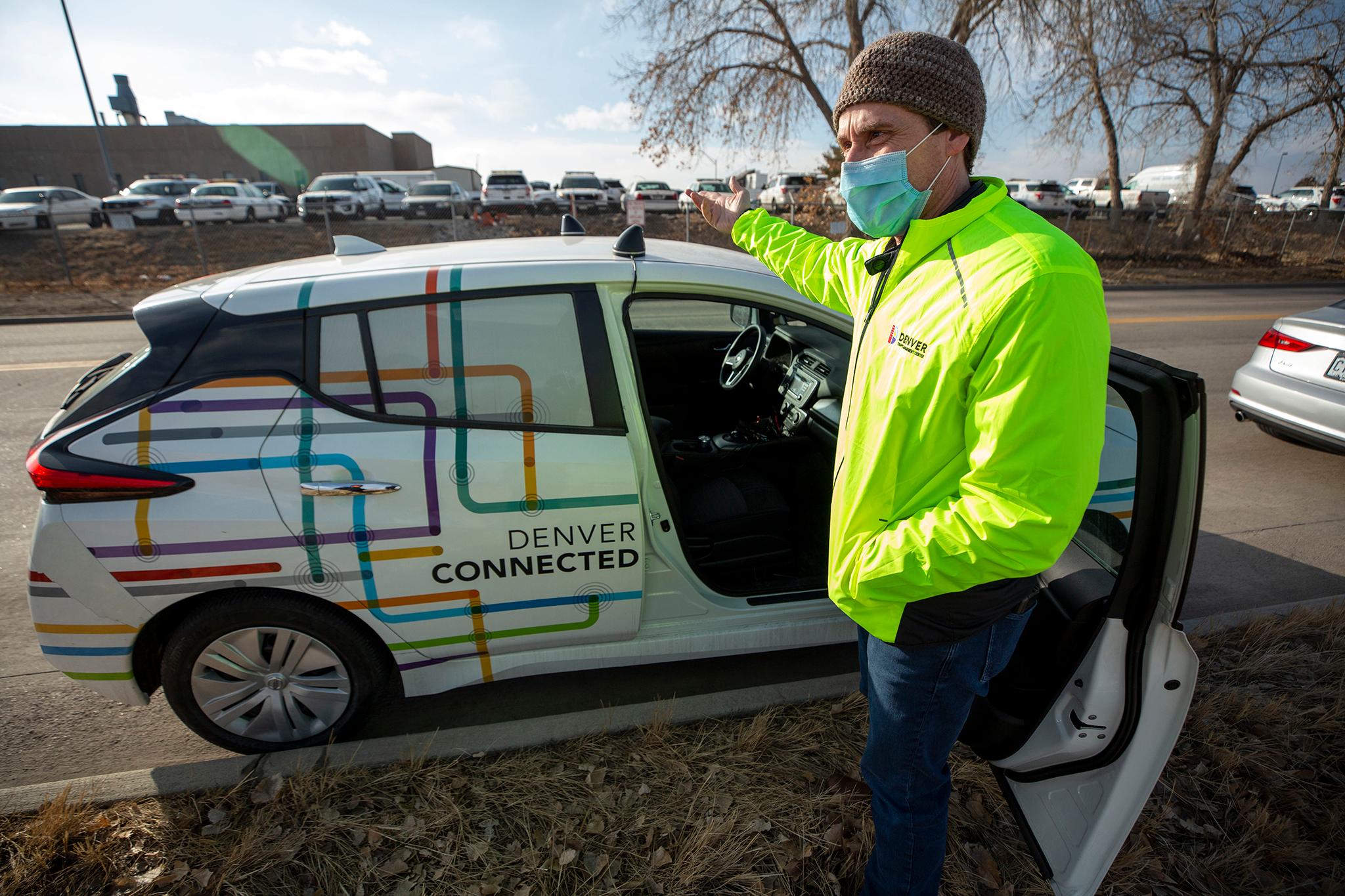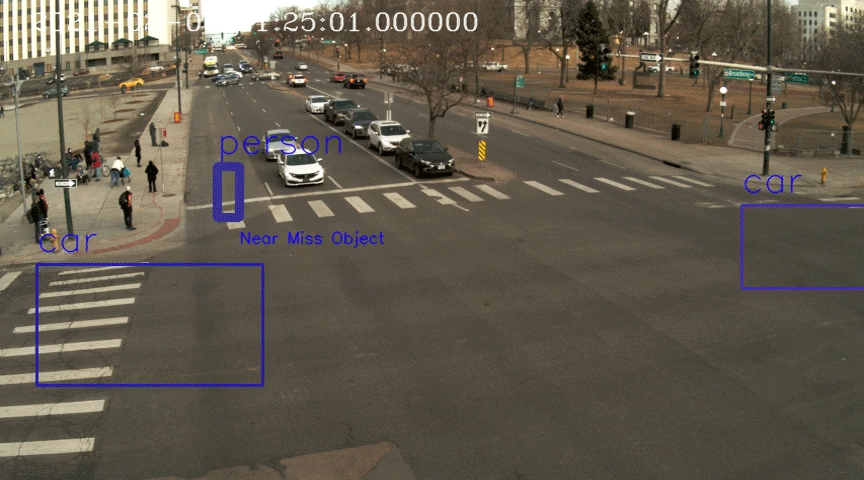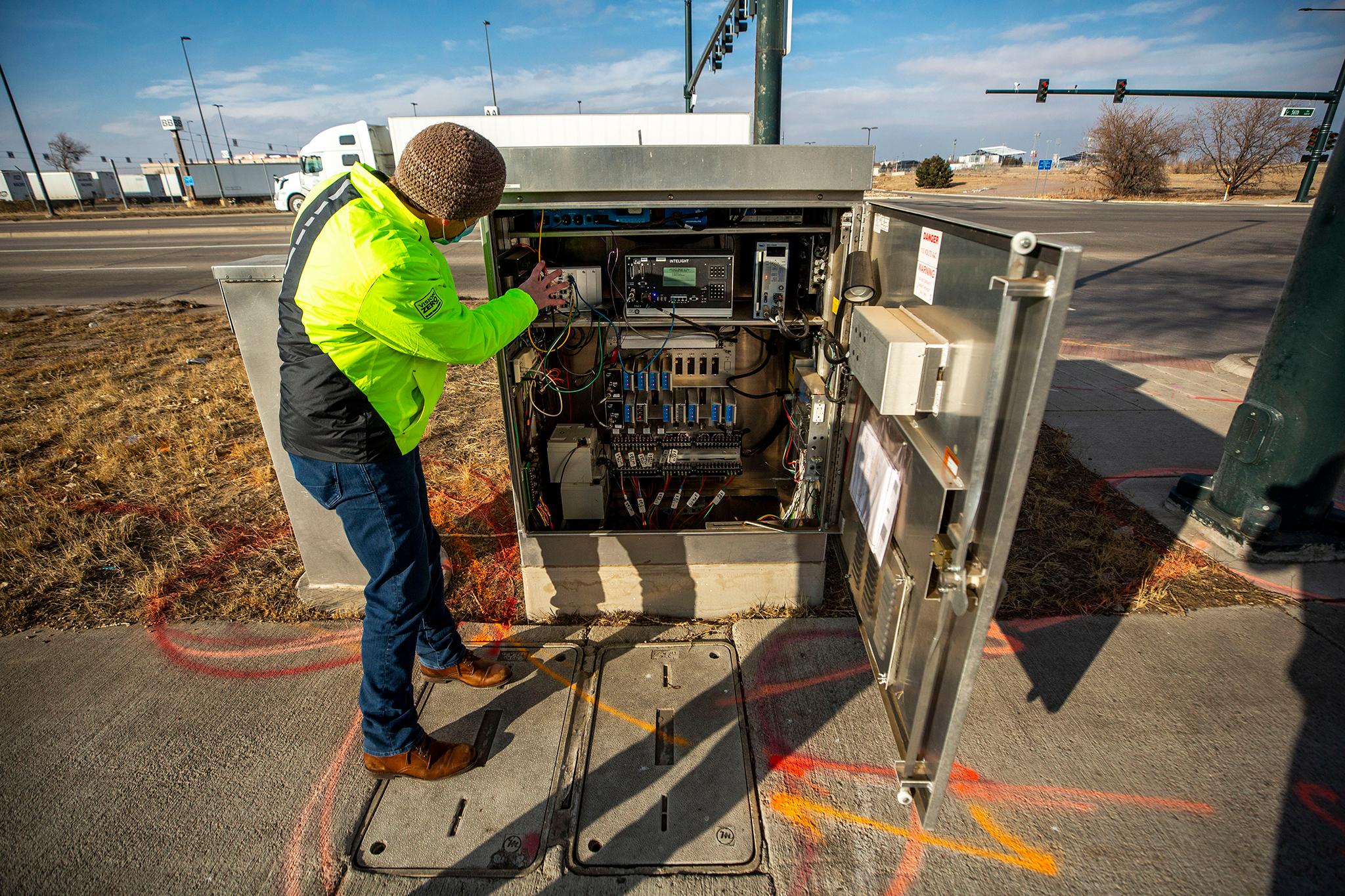Crossing Green Valley Ranch Boulevard at Walden Street is not always a pleasant experience for LaToya Johnston, who periodically walks to the nearby King Soopers. The car-heavy area in far northeast Denver doesn't exactly cater to people walking.
"I mean, it's OK. I get where I need to go, hopefully without getting hit," Johnston said.
But things have gotten much better, she said, since the city installed overhead flashing lights that warn drivers when there's a pedestrian in the crosswalk -- at least when someone presses a button that signals the traffic signals to signal the drivers to hit the brakes.
Traffic signals like these are multiplying across the city, whose streets are, by and large, designed to move cars and trucks through quickly, not to keep pedestrians safe. Denver has been slowly retrofitting its roads to cater more to people like Johnston, who doesn't drive, since the city government adopted an official goal of zero traffic deaths.
"It's pretty smart!" Johnston said of the traffic signal.
But it's not as smart as the technology being worked on by Michael Finochio, a transportation engineer with the Denver Department of Transportation and Infrastructure. While Denver makes inroads on the latest evolution of the city's transportation system, he's already working on the next one, which aims to create a digital conversation of sorts between all roadway users.


Finochio is leading a project, paid for with a federal grant, that connects traffic signals with cars, people, and other signals in the name of safety. He calls the connections "handshakes." For example, a traffic signal might detect a pedestrian in a crosswalk. Not only can the traffic signal then give the pedestrian more time to cross, but it can send a message to a vehicle, which alerts the driver, who might put their phone down and pay attention.
"So instead of putting a static sign up saying, 'Watch for peds' that's up all the time, these things are in the background and only activate when the condition is true," Finochio said.
That's one eventual goal. For now, the tech is only being tested on some city government vehicles, including 25 snowplows, and traffic signals that can "talk" with one another and other traffic signals. So plows can request a green light during a snowstorm and the signal will grant them one. But the signal might also tell them real-time information eventually -- that it's especially icy in certain places, or there's a crash ahead.
"Right now, my vehicle tells me there's ice on the ground, but it's really just looking at the temperature and there's no ice anywhere," said Cindy Patton, head of transportation operations for DOTI. "And so in the future, you will have more reference points to add that will drive the message to the end-consumer of that information. That'll be more accurate and coming from more data points."
This technology is different than signal-priority, which lets buses and fire trucks, for example, tell a traffic signal that they need a green light. That communication is one-way -- giving an order -- while Finochio's project is more of a conversation between everyone and everything on the road, a living computer.
"The way I look at it is, in the 1980s we had desktop computers, but they were pretty much standalone devices, so anything you wanted to do with it had to be contained within the computer that sat on your desk," Finochio said. "Today we have networked computers, and that's the difference between where we are today and where we want to get to."
DOTI spokesperson Nancy Kuhn said no one has to worry about Big Brother, because this stuff is far from ready for primetime. There are privacy concerns, which is why city government vehicles are the only ones with this tech installed. And Denver doesn't have the money budgeted for a citywide buildout anyway, Patton said. This attempt is an early version of a system that is pretty far out, though no one would estimate how far.
Privacy and security are two reasons why connected vehicles are far from the current standard. The Federal Highway Administration and the Federal Communications Commission wanted this tech to be somewhat standard by 2020, Finochio said, but here we are in a small pilot phase in 2021.
"Before we can allow automated vehicles on the road, we have to build the infrastructure -- everything from, like, pavement markings to signs, they all have to be somehow connected," Finochio said. "And then we have to set up trust ... I don't want a car pretending to be an emergency vehicle running down the road, changing all the lights."
DOTI is also using artificial intelligence to track how drivers are interacting with people in crosswalks in hopes of saving lives and preventing injuries.
Check it out:

That's footage from Colfax and Broadway, one of 17 intersections with this artificial intelligence, which analyzes the size and movements of people and vehicles. The AI documents "near misses" between vehicles and people. For instance, drivers are (for some reason?) allowed to turn into crosswalks while people are in them, with a walk signal. That can mean close calls.
"When that happens 25 times, 100 times in an hour, this intersection has a problem," Finochio said.
If you're just looking at crashes, it takes three years of data points to make a trend, meaning it might take a while before engineers decide something needs to change -- and people might be getting killed or injured in the meantime. But this tech speeds up that process.
The idea is that it informs engineers if changes need to be made at intersections, like to give pedestrians more time to cross the street. But we're not at a point where this happens in real-time.
This is just the very beginning of the next evolution of high-tech transportation. Remember, Denver is on a centuries-long pace to build out sidewalks, the most basic form of transportation infrastructure, citywide.













